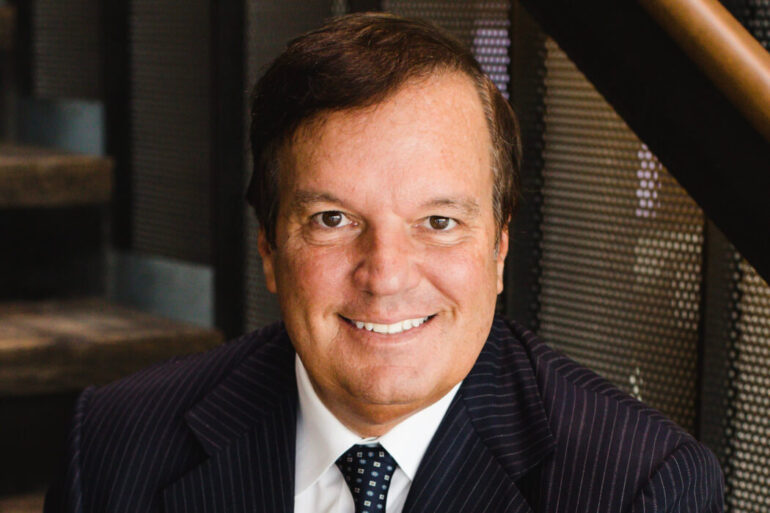After successfully operating businesses through both the dot-com bust and the 2008 Financial Crisis, John Raeder has developed a “paranoia of operational frailty,” always planning for a doomsday scenario. That approach seems to work well; the 340-page playbook he built from the experience has consistently helped portfolio companies at Bow River Capital, where he is the Head of Software Investments, jump from $5-$10 million in revenue to well beyond $25-$50 million in a few years.
In a recent #CIBCInnovationBanking podcast episode, Raeder shared more about how he thinks about growing businesses—and what founders should be doing to set the stage for growth.
A conservative approach to diligence
When Raeder was running his tech business through the dot-com bust, there was no Option B available to him; he had to make it work, and he did. But the experience left scars.
“I created a series of sensitivities, both intellectually and from a budgeting standpoint of worst-case scenarios, draconian models,” said Raeder. “Survived a number of macro backdrops and also just the frailties of early-stage companies that are focused on rapidly growing.”
“You can often and always fix poor-performing companies, but you can’t fix bad industries.”
After successfully navigating that storm, he became an investor, first under his own banner with the Raeder Venture Fund and now with Bow River Capital. But the skills and growth playbooks he developed during those trying times have stayed with him as he helps his portfolio companies grow.
When Raeder approaches diligence today, he focuses on relationships first, noting that it “typically takes us a couple of years to build those relationships” before investing. During that time, he and his team are also looking deeply at the business, assessing it against macro triggers that are common in bust times, to see how the business might fare. From there, the team aligns with the founders on cultural expectations and finally operating models, with Raeder “deconstructing” the current operating processes to see how his proprietary 340-page growth playbook can add value.
Despite having a rigorous process, Raeder said it doesn’t mean they will invest in any business that fits; it has to be the right industry. Raeder said he likes FinTech, construction tech, businesses that can be improved through quality assurance or human capital management, and any technology that is mission-critical to its sub-industry. On the flip side, he doesn’t like industries like healthcare IT where the adoption curve can take decades.
“You can often and always fix poor-performing companies, but you can’t fix bad industries,” said Raeder.
The 40:40:20 growth playbook
When Bow River invests in a company, Raeder said the team joins as full-time operators for 6-12 months alongside the founder and leadership team, focused on growth and transformation. Raeder said this is a way they build trust with operators, many of whom are bootstrapped and taking on capital for the first time with Bow River. However, it’s also because the firm’s playbook is a comprehensive overhaul of the business. When you’re transforming a whole organization, you need a lot of in-depth experience to help you navigate through it; a weekly investor call will not be enough.
When Bow River is working with a portfolio company, here’s roughly how Raeder said the growth engagement will look. The first 40 percent of investment is for sales and marketing acceleration, ensuring the team is experienced in building SaaS business models.
“In nearly all cases, we will top grade the sales leadership to an A-player that has built and scaled multiple companies in the SaaS world,” said Raeder. “And we will typically invest heavily in their go-to-market motion, which includes their sales force, their demand gen levers, and other marketing investment opportunities.”
The second 40 percent of capital is for innovation and product-led growth, with the remaining 20 percent for systematizing the business—bringing in standardized tools and systems to manage customer success, referenceability, and interactions with customers and users.
“Capital that actually can help grow businesses, help address product road-mapping complexities and certainly create a very solid operating plan and budgets no matter what the macro economy looks like,” said Raeder.
Business is a relationship game
Looking ahead, Raeder and Bow River Capital have $600 million in dry powder waiting to be deployed over the next three years. While there may be economic uncertainty on the horizon, Raeder said their approach isn’t going to change: they still want to meet face to face, they still believe in their considered diligence approach, and their playbook has been battle-tested by two of the worst economic crises in modern history.
All that to say, they think they have found a long-lasting edge.
“We haven’t changed our knitting by way of our investment philosophy for over two decades, and we believe that in good times and bad, where these businesses we invest in and our expertise, we can outperform and really decouple the execution and performance of these companies from public market and large company results,” said Raeder.


